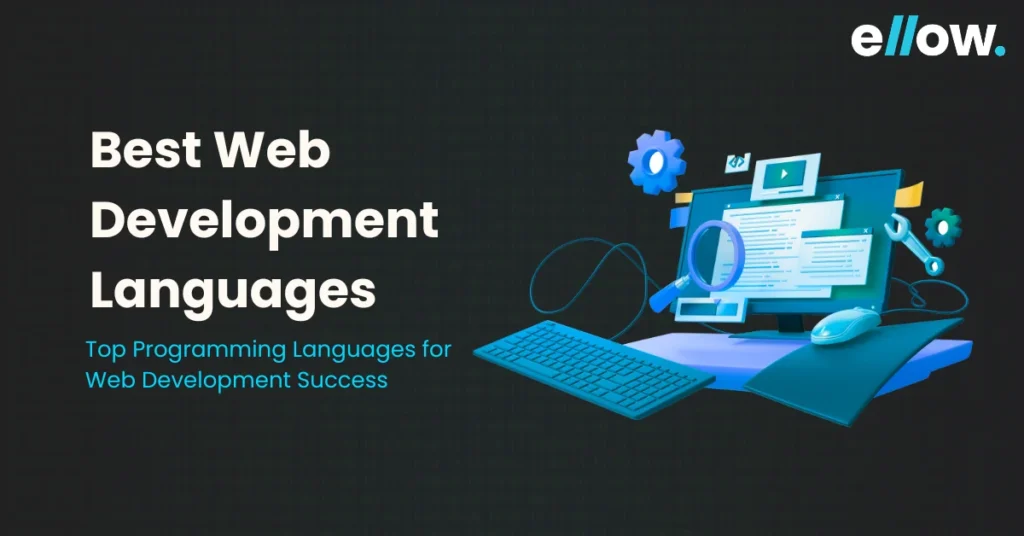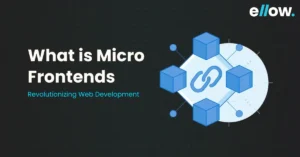Web development is the process of creating and maintaining websites for the Internet. It encompasses various aspects such as web design, content development, client-side/server-side scripting, and network security configuration. According to the Worldwide Developer Survey, some of the most used programming languages in web development include JavaScript, Python, and Java.
The concept of web development has evolved significantly since its inception in the 1990s. Initially, websites were static and consisted mainly of text and images. However, with advancements in technology and the introduction of dynamic web development tools, modern websites have become more interactive and engaging.
Today, businesses rely heavily on their online presence to attract and retain customers. As a result, skilled web developers are in high demand across various industries. With the continuous evolution of programming languages and frameworks, the field of web development is dynamic and ever-changing, offering new opportunities for innovation and creativity.
Top Web Development Languages
1. HTML/CSS
HTML and CSS serve as the fundamental building blocks of web development, providing the structure and styling for web pages. While not technically programming languages, they are essential for creating visually appealing and well-structured websites.
Pros:
- Easy to learn and use, featuring a clear syntax that beginners can grasp quickly.
- Widely supported across browsers and devices, with a large and active community providing resources and support.
- Essential for defining the structure and layout of web pages, serving as the backbone of web design.
- Great for prototyping and rapid development, allowing developers to quickly visualize and iterate on designs.
- Integrates seamlessly with other web technologies like JavaScript and PHP for creating dynamic and interactive web applications.
Cons:
- Limited interactivity on their own, necessitates the use of additional languages like JavaScript for dynamic content and user interaction.
- Can be constrained in terms of functionality and capabilities compared to full-fledged programming languages.
- Requires the use of supplementary languages for interactivity and dynamic content, which can complicate development workflows.
- Maintenance and updates can be challenging, especially for large or complex websites, due to the lack of advanced programming features.
- Code can become verbose, particularly for intricate or interactive websites, leading to readability and maintainability issues.
Use Cases:
- Creating and defining the structure and layout of web pages.
- Prototyping and development speed for quickly visualizing designs.
- Integrating with other web technologies to build dynamic and interactive web applications.
- Serving as the foundational knowledge for all web design, providing a solid starting point for web developers to build upon with additional languages.
2. Python
Python is renowned for its simplicity, readability, and versatility, making it an excellent choice for server-side web development. It boasts a vast ecosystem of libraries and frameworks, empowering developers to build various applications, from simple websites to complex web services.
Pros:
- Python’s syntax emphasizes readability and simplicity, making it easy to learn and use for beginners and experienced developers alike.
- The language offers an extensive collection of libraries and frameworks, such as Django and Flask, which streamline web development and accelerate the creation of robust and scalable web applications.
- Python’s versatility extends beyond web development; it is widely used in data analysis, machine learning, scientific computing, and automation, providing developers with a broad spectrum of applications.
Cons:
- While Python is lauded for its simplicity, its interpreted nature can lead to slower execution speeds compared to compiled languages like C++ or Java in certain scenarios.
- The Global Interpreter Lock (GIL) in Python can limit concurrency, hindering its performance in highly concurrent applications.
Use Cases:
- Python is ideal for server-side web development, offering a rich ecosystem of frameworks and tools for building dynamic and scalable web applications.
- Its capabilities extend to data analysis and visualization, where libraries like Pandas and Matplotlib empower developers to process and visualize large datasets efficiently.
- Python’s machine learning libraries, such as TensorFlow and sci-kit-learn, make it a preferred language for developing predictive models and AI-driven applications in various domains.
3. JavaScript
JavaScript stands as the cornerstone of web development, serving as a dynamic and versatile language employed extensively for both front-end and back-end tasks. It boasts unparalleled popularity and is projected to maintain its dominance well into 2024. With JavaScript, developers can craft interactive web pages and robust server-side applications alike, owing to its adaptability and broad utility in modern web development landscapes.
Pros:
- Versatile usage in both front-end and back-end development spheres.
- Empowers the creation of dynamic and responsive web applications.
- Benefits from a vast community offering abundant libraries, frameworks, and tools.
Cons:
- A single-threaded nature might lead to performance bottlenecks in certain scenarios.
- Asynchronous programming concepts can present a learning curve for newcomers.
Use Cases:
- Integral for front-end and back-end web development endeavors.
- Ideal for crafting user interfaces with real-time updates and interactive elements.
- Well-suited for constructing web applications requiring dynamic content delivery.
4. TypeScript
TypeScript, a superset of JavaScript, enriches the language with static typing and other features, enhancing code quality and maintainability. It’s gaining traction in web development due to its ability to detect errors at compile time, leading to more robust software.
Pros:
- Static typing enables early error detection, reducing bugs and improving code reliability.
- Enhances code maintainability by providing clear type annotations and better tooling support.
- Offers familiarity to JavaScript developers while providing additional safety features.
- Facilitates large-scale codebases by enabling developers to catch potential issues before runtime.
Cons:
- Requires a compilation step, which can slow down the development process.
- The learning curve for developers transitioning from dynamically typed languages like JavaScript.
- Requires strict adherence to type annotations, which may increase development time initially.
Use Cases:
- Especially beneficial for large-scale web applications where codebase complexity is a concern.
- Ideal for teams seeking better tooling support and enhanced developer productivity.
- Suited for projects where early error detection and strong typing are critical for maintaining code quality.
- Particularly valuable for collaborating on projects with multiple developers, ensuring consistency and reducing debugging efforts.
5. Ruby
Ruby’s appeal lies in its elegant syntax and simplicity, making it an inviting choice for backend web development tasks. When paired with the Ruby on Rails framework, Ruby becomes a powerhouse for rapidly prototyping and deploying web applications.
Pros:
- Ruby boasts a simple and elegant syntax, which enhances readability and developer productivity.
- The language supports metaprogramming, allowing developers to write code that can modify itself, facilitating dynamic and flexible applications.
- Ruby enjoys compatibility with a plethora of web development frameworks, including the immensely popular Ruby on Rails, which streamlines the development process with its convention-over-configuration approach.
Cons:
- Despite its elegance, Ruby may suffer from slower execution speeds compared to some other languages, which could be a concern for performance-critical applications.
- In certain scenarios, particularly those demanding extensive scalability, Ruby may face limitations due to its performance characteristics.
Use Cases:
- Ruby shines in backend web development, particularly when used in conjunction with the Ruby on Rails framework, for swiftly building robust web applications.
- It excels in scenarios where rapid prototyping and development are crucial, making it a favored choice for startups and small businesses looking to iterate quickly.
- Ruby finds its place in the development of dynamic and interactive web applications, thanks to its expressive syntax and the rich ecosystem of libraries and tools provided by the Ruby community.
6. PHP
PHP, initially designed for server-side scripting, remains a stalwart in web development due to its simplicity and wide-ranging compatibility with various web servers and databases. Its straightforward syntax and extensive documentation make it accessible to developers of all skill levels, enabling the creation of dynamic and interactive web applications.
Pros:
- PHP’s simplicity and ease of learning make it an attractive option for beginners and seasoned developers alike.
- Compatibility with numerous web servers and databases offers flexibility in application deployment.
- A large and supportive community ensures ample resources and assistance for developers.
Cons:
- Despite its widespread use, PHP’s standard library can be inconsistent, leading to potential challenges in certain development scenarios.
- Security vulnerabilities may arise if best practices are not followed, necessitating careful attention to coding standards and security measures.
Use Cases:
- PHP is well-suited for server-side web development tasks, ranging from small-scale websites to large-scale enterprise applications.
- Its ability to handle dynamic content makes it ideal for developing content management systems (CMS), e-commerce platforms, and social networking sites.
- PHP powers a multitude of popular web applications, including WordPress, Joomla, and Drupal, highlighting its versatility and reliability in the web development landscape.
7. Kotlin
Kotlin, born from JetBrains, the brains behind the widely used IDE IntelliJ IDEA, offers a modern approach to web development. Its seamless integration with Java and Android development environments makes it a preferred choice for crafting web applications and Android apps alike.
Pros:
- Kotlin seamlessly works with Java and Android, allowing developers to leverage existing code and libraries.
- Kotlin’s syntax is clean and succinct, enhancing readability and developer productivity.
- With support for functional programming paradigms, Kotlin enables developers to write more expressive and concise code.
Cons:
- Compared to more established languages, Kotlin’s ecosystem is still evolving, which may limit the availability of certain libraries and tools.
- While Kotlin has a growing community, it may not offer the same depth of support and resources as more established languages.
Use Cases:
- Kotlin can power the backend of web applications, providing a modern and efficient development experience.
- With its seamless integration with Android development, Kotlin is an excellent choice for crafting both mobile and web-based applications.
- Kotlin’s concise syntax and interoperability with Java make it suitable for building robust and scalable software solutions.
8. Swift
Swift, created by Apple for iOS, macOS, and watchOS development, is gaining recognition in the web development arena for its exceptional speed and safety features. Its design prioritizes both rapid execution and robust error prevention.
Pros:
- Swift’s compiler optimizes code for speed, resulting in efficient execution. Additionally, its type safety features help catch errors during development, enhancing the reliability of web applications.
- Being native to the Apple ecosystem, Swift seamlessly integrates with iOS frameworks like UIKit and SwiftUI, facilitating the development of cross-platform applications.
- While Swift is primarily associated with Apple platforms, initiatives like Swift for TensorFlow and server-side Swift frameworks extend its usability to non-Apple environments.
Cons:
- Swift’s usage primarily revolves around iOS, macOS, and watchOS development, limiting its ecosystem compared to more established web development languages.
- Although Swift’s community is growing steadily, it still needs to be bigger compared to more established languages like JavaScript and Python, which might result in fewer resources and support channels for developers.
Use Cases:
- Swift can be used to create engaging front-end interfaces for web applications, especially for projects where compatibility with iOS devices is a priority.
- Swift remains the language of choice for developing native iOS and macOS applications, offering developers a powerful toolset and access to Apple’s extensive ecosystem of frameworks and tools.
- With its emphasis on performance and safety, Swift is well-suited for building real-time applications, such as chat apps, interactive dashboards, and multimedia experiences, where responsiveness and reliability are crucial.
9. Go
Go, developed by Google, is highly regarded for its simplicity, efficiency, and concurrency support. It offers a straightforward syntax that makes it easy for developers to learn and use effectively. Go excels in building high-performance and concurrent web applications, making it particularly suitable for scenarios where real-time processing and scalability are crucial.
Pros:
- Go’s clean and concise syntax reduces the learning curve, allowing developers to become productive quickly.
- Go’s built-in concurrency features enable developers to efficiently handle multiple tasks simultaneously, making it well-suited for building scalable and highly responsive web applications.
- Go’s compilation of native machine code results in fast and efficient execution, contributing to the performance of web applications, especially in high-demand scenarios.
Cons:
- While Go has a growing ecosystem of libraries and tools, it may have fewer options compared to more established languages like Python or JavaScript, which can sometimes require developers to implement certain functionalities from scratch.
- Go’s lack of support for generics can lead to more verbose code in certain situations, making it less flexible compared to languages that offer generic programming capabilities.
Use Cases:
- Go is well-suited for building backend systems of web applications, handling HTTP requests, processing data, and interacting with databases efficiently.
- Go’s built-in support for concurrency makes it an excellent choice for building software that needs to handle multiple tasks concurrently, such as real-time messaging systems or distributed computing applications.
- Go’s concurrency features make it ideal for building real-time applications, such as chat systems or streaming services, where responsiveness and scalability are essential.
10. Rust
Rust stands out among backend web development languages for its unwavering emphasis on safety, performance, and memory management. Unlike many other languages, Rust’s design actively prevents common pitfalls like null pointer dereferencing, buffer overflows, and data races, which are often the source of critical security vulnerabilities.
Pros:
- Rust’s ownership system ensures memory safety without the need for a garbage collector, making it ideal for building secure web applications where robustness is paramount.
- Rust’s zero-cost abstractions and low-level control over system resources allow developers to squeeze out maximum performance without sacrificing safety.
- By eliminating entire classes of bugs at compile time, Rust fosters a culture of writing more reliable and secure codebases, reducing the likelihood of costly security breaches and data leaks.
Cons:
- Rust’s unique ownership model and strict compiler rules may pose challenges for developers accustomed to more lenient languages, requiring a mindset shift and dedicated learning effort.
- While rapidly growing, Rust’s ecosystem and community are still maturing compared to more established languages like Python or JavaScript, which may lead to limited third-party libraries and resources for certain niche use cases.
11. Dart
Dart, a language developed by Google, is gaining attention in web development circles for its simplicity and productivity enhancements. It offers developers an easy-to-learn syntax and streamlined development process, making it an appealing choice for front-end web development.
Pros:
- Dart’s syntax is straightforward and intuitive, reducing the learning curve for new developers.
- With features like hot reload, Dart enables developers to see changes instantly, enhancing productivity during the development process.
- Dart can be seamlessly integrated with frameworks like Flutter, enabling developers to build cross-platform web applications with ease.
Cons:
- While Dart is gaining traction within Google’s ecosystem, its adoption outside of Google-related projects remains relatively limited.
- Dart’s community size is smaller compared to more established languages like JavaScript or Python, which may result in fewer resources and community support.
Use Cases:
- Dart is well-suited for building user interfaces and front-end components of web applications.
- Dart’s productivity features make it a good fit for projects requiring frequent updates and iterations.
- Dart’s compatibility with Flutter allows developers to leverage their Dart skills to build mobile and desktop applications alongside web development projects.
Choosing the Best Language for Web Development in 2024
Choosing the best programming language for web development in 2024 requires careful consideration of various factors to ensure the success of your project. Let’s look into a systematic approach to help you make an informed decision.
- Identify Project Requirements: Start by clearly defining your project’s needs, including website complexity, desired features, performance expectations, and any integration requirements with external systems. Different languages excel in different areas, so understanding your project’s specifics will guide your choice.
- Evaluate Learning Curve and Familiarity: Assess your team’s existing skills and familiarity with programming languages. Opting for a language your team is proficient in can expedite development. However, if open to learning, consider factors like the availability of learning resources, community support, and the language’s popularity.
- Consider Community Support and Resources: Strong community support and ample resources can significantly aid your development process. Look for active developer communities, forums, and comprehensive documentation. A robust support system ensures timely assistance and access to shared knowledge.
- Evaluate Scalability and Performance: Scalability is crucial, especially if anticipating rapid growth or high traffic. Some languages, such as Java and Python, are known for their scalability and performance capabilities. Assess a language’s ability to handle concurrent users, process data efficiently, and integrate with caching and databases.
- Keep an Eye on Future Trends: Stay updated on emerging languages, frameworks, and libraries gaining traction in the industry. Monitor industry trends to ensure your chosen language aligns with the future direction of web development.
- Explore Frameworks and Ecosystem: Frameworks play a vital role in web development, impacting productivity and efficiency. Research popular frameworks associated with your chosen language, considering factors like features, community support, ease of use, and available resources. Frameworks like Ruby on Rails, Laravel, Django, and ReactJS are popular due to their robust ecosystems and developer-friendly features.
What are the Essential Features of Any Coding Language?
- Syntax: Clear and logical syntax enables developers to write code in a structured and understandable manner. It helps in avoiding errors and promotes readability.
- Control Structures: Including control structures like if-else statements, loops, and switch statements allows developers to control the flow of execution based on conditions, enhancing the flexibility and functionality of the code.
- Data Types and Variables: Supporting various data types (such as integers, strings, and booleans) and enabling the declaration and manipulation of variables is essential for storing and processing data within the code.
- Functions and Modularity: The ability to define functions facilitates code reuse, promotes modularity, and enhances code organization by breaking it into smaller, manageable pieces with distinct purposes.
- Error Handling: Effective error handling mechanisms, such as try-catch blocks or exception handling, assist developers in identifying and managing errors gracefully, thereby improving the reliability and resilience of the code.
- Libraries and Modules: Access to libraries and modules expands the capabilities of a language by providing pre-written code for common tasks and functionalities, accelerating development and reducing redundant work.
- Debugging and Testing Tools: Built-in debugging tools and support for testing frameworks simplify the process of identifying and rectifying errors or bugs, ensuring the correctness and quality of the code.
Choosing the Best Language for Web Development in 2024
Selecting the ideal language for web development can be challenging. It’s important to choose languages based on your project’s needs. Relying on just one language isn’t feasible, having proficiency in 3-4 languages is essential. Begin with languages that are user-friendly and clear.
For front-end development, JavaScript (JS) remains a top choice due to its high demand and versatility. Mastery of JS enables you to work on both front-end and back-end technologies seamlessly.
When it comes to back-end development, several languages are popular choices, including Python, Java, and PHP. Each has its strengths and areas of application, so choose based on your project’s requirements and your familiarity with the language.
Conclusion
While there are numerous languages available for web development, focusing on mastering HTML/CSS, PHP, Python, JavaScript, Java, Ruby, and Swift is an excellent starting point for launching your career in this field.
These languages equip you with a strong foundation and prepare you for advanced development tasks. Web development is a changing field, constantly evolving along with the programming languages used within it. What’s popular today may lose relevance in the future, while lesser-known languages may rise to prominence.
To thrive in this ever-changing landscape, web developers must stay updated on industry trends and popular programming languages. By doing so, they can continue to grow professionally and create top-notch websites and web products.
If you’re seeking skilled web developers, feel free to reach out to ellow.io for hiring opportunities. We’re here to connect you with talented professionals who can bring your projects to life.
Recommended Reads
Best programming Languages for Android App Development
Top 10 Programming and Scripting Languages for DevOps Engineers
10 Best Programming Languages for AI Development in 2024
FAQs
What are the best languages to start learning for web development?
HTML, CSS, PHP, Python, JavaScript, Java, Ruby, and Swift are excellent languages to begin with for aspiring web developers.
How do I know which programming language is best for a specific project?
Consider factors such as project requirements, scalability, and your familiarity with the language. Each language has its strengths and suitability for different types of projects.
Is it necessary to learn all the recommended languages to become a proficient web developer?
No, it’s not necessary to learn all of them at once. Starting with one or two languages and gradually expanding your skill set as you gain experience is a common approach.
How can I stay updated on the latest trends and languages in web development?
Follow industry blogs, attend conferences and workshops, and join online communities and forums dedicated to web development. Keeping an eye on job postings can also give you insights into which languages are in demand.
What resources are available for learning these programming languages?
There are numerous resources available, including online tutorials, books, video courses, and interactive coding platforms. Additionally, many universities and coding boot camps offer web development courses. Choose the format that best suits your learning style and goals.









